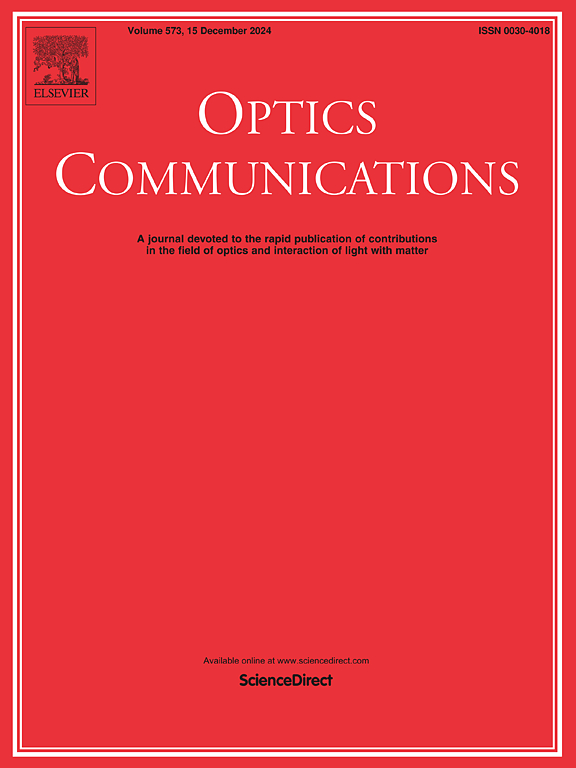水下定向湍流计算鬼影成像容忍度研究
IF 2.2
3区 物理与天体物理
Q2 OPTICS
引用次数: 0
摘要
本文采用理论分析和实验数据相结合的方法,研究了水下湍流对计算机鬼影成像技术的影响。我们模拟了车辆引起的湍流,并利用压缩感知进行图像重建,分析其对图像质量的影响。我们的研究结果表明,湍流,特别是与光束对齐的气流,显著降低了图像质量,在信号接收端影响最明显。随着湍流的增加,图像质量下降,并且湍流的方向性对图像质量有很大影响,平行湍流引起更多的波前像差。CGI显示出对光垂直湍流的耐受性,尽管在强烈湍流中分辨率、对比度和亮度降低,但仍能保持清晰度。我们引入PSNR和SSIM来量化湍流对图像质量的影响,证实了CGI对湍流干扰的恢复能力。我们的研究结果表明,优化车辆平台的推进系统以减少信号检测方向的湍流,可以保持鬼影成像的性能。本研究为提高CGI在水下环境中的抗湍流性能奠定了科学基础,有助于CGI在复杂水下场景中的实际应用。本文章由计算机程序翻译,如有差异,请以英文原文为准。
Investigation on tolerance of computational ghost imaging for directional underwater turbulence
This study investigates the effects of underwater turbulence on computational ghost imaging (CGI) technology, combining theoretical analysis with experimental data. We simulated vehicle-induced turbulence and utilized compressed sensing for image reconstruction to analyze its impact on image quality. Our findings reveal that turbulence, especially flow-aligned with the light beam, significantly degrades image quality, with the most pronounced effects at the signal reception end. As turbulence increases, image quality declines, and turbulence directionality substantially affects image quality, with parallel turbulence causing more wavefront aberrations. CGI shows tolerance to light-perpendicular turbulence, maintaining clarity despite resolution, contrast, and brightness reductions during intense turbulence. We introduced PSNR and SSIM to quantify the impact of turbulence on image quality, confirming CGI's resilience to turbulence interference. Our results imply that optimizing the vehicle platform's propulsion system to minimize turbulence in the signal detection direction can preserve ghost imaging performance. This research lays a scientific groundwork for improving CGI's turbulence resistance in underwater environments, aiding its practical use in complex underwater scenarios.
求助全文
通过发布文献求助,成功后即可免费获取论文全文。
去求助
来源期刊

Optics Communications
物理-光学
CiteScore
5.10
自引率
8.30%
发文量
681
审稿时长
38 days
期刊介绍:
Optics Communications invites original and timely contributions containing new results in various fields of optics and photonics. The journal considers theoretical and experimental research in areas ranging from the fundamental properties of light to technological applications. Topics covered include classical and quantum optics, optical physics and light-matter interactions, lasers, imaging, guided-wave optics and optical information processing. Manuscripts should offer clear evidence of novelty and significance. Papers concentrating on mathematical and computational issues, with limited connection to optics, are not suitable for publication in the Journal. Similarly, small technical advances, or papers concerned only with engineering applications or issues of materials science fall outside the journal scope.
 求助内容:
求助内容: 应助结果提醒方式:
应助结果提醒方式:


